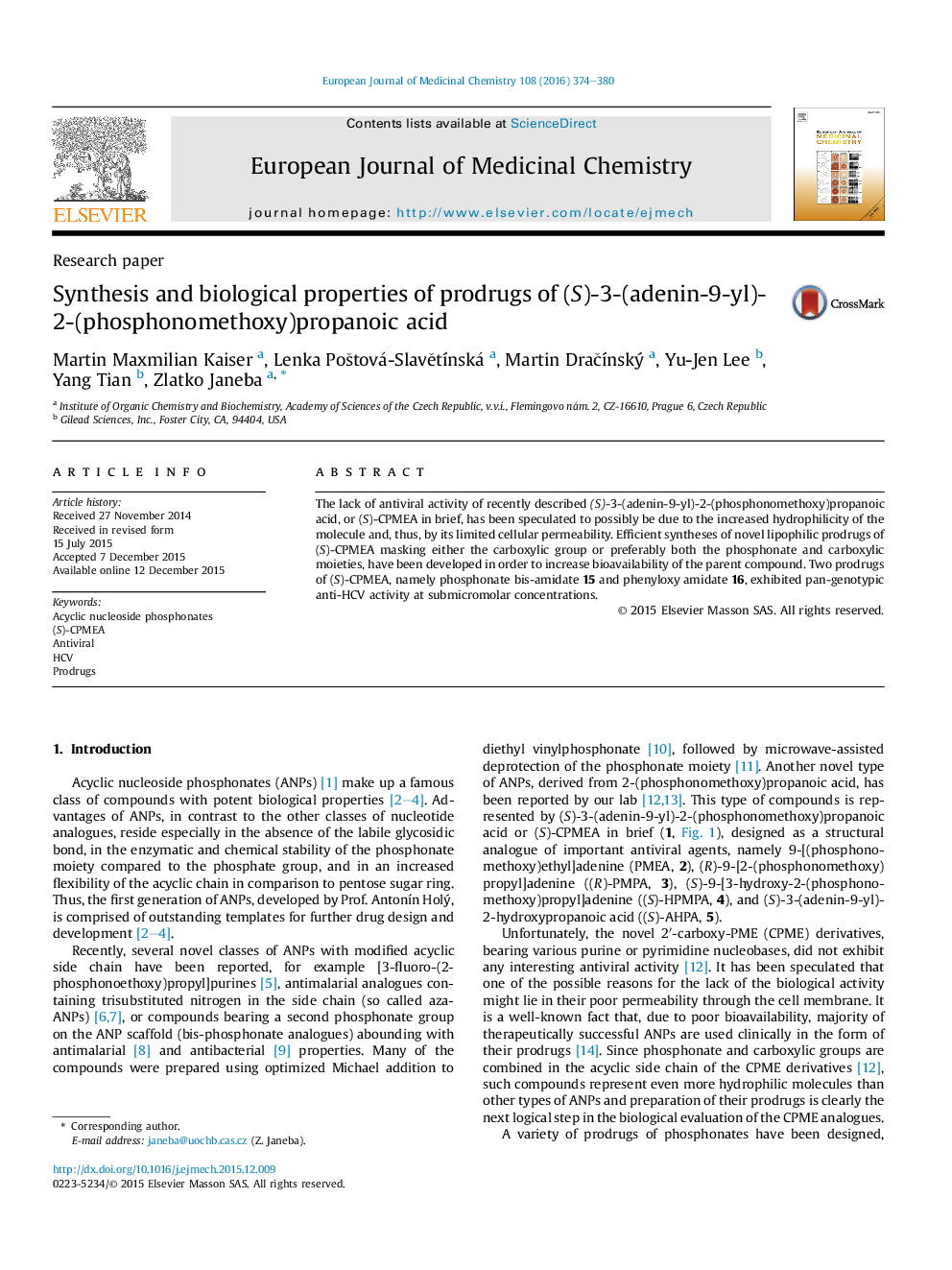| Article ID | Journal | Published Year | Pages | File Type |
|---|---|---|---|---|
| 1393859 | European Journal of Medicinal Chemistry | 2016 | 7 Pages |
•Novel acyclic nucleoside phosphonates.•Prodrugs synthesis.•Submicromolar pan-genotypic anti-HCV activity.
The lack of antiviral activity of recently described (S)-3-(adenin-9-yl)-2-(phosphonomethoxy)propanoic acid, or (S)-CPMEA in brief, has been speculated to possibly be due to the increased hydrophilicity of the molecule and, thus, by its limited cellular permeability. Efficient syntheses of novel lipophilic prodrugs of (S)-CPMEA masking either the carboxylic group or preferably both the phosphonate and carboxylic moieties, have been developed in order to increase bioavailability of the parent compound. Two prodrugs of (S)-CPMEA, namely phosphonate bis-amidate 15 and phenyloxy amidate 16, exhibited pan-genotypic anti-HCV activity at submicromolar concentrations.
Graphical abstractFigure optionsDownload full-size imageDownload as PowerPoint slide
